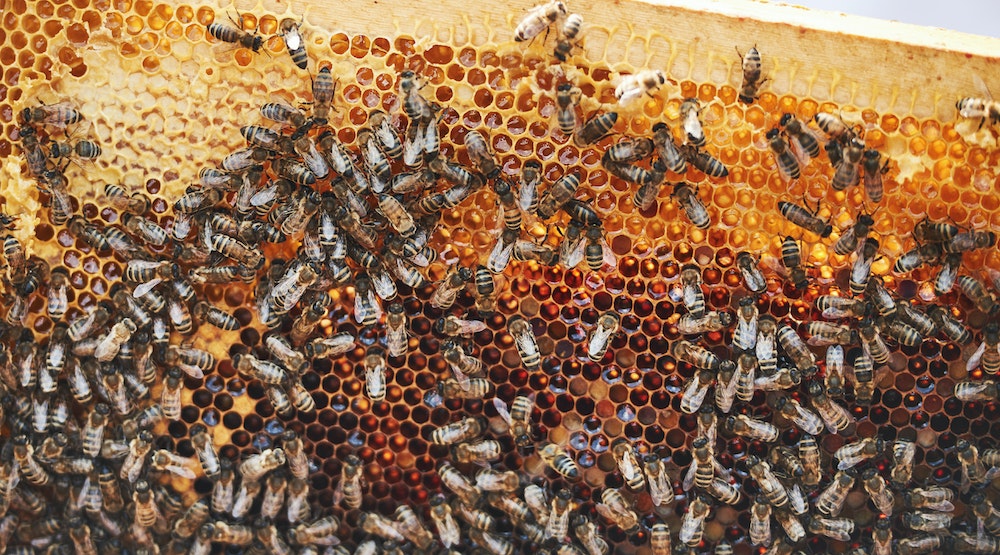When you think of beekeeping, city landscapes may not be the first thing that comes to mind. Traditionally, bees have had their place in sprawling rural areas, away from the hustle and bustle of the city. However, these fuzzy insects have found a home in the hearts of city dwellers and atop their high-rise buildings. Urban beekeeping, the practice of keeping bees in cities, has emerged as a solution to dwindling bee populations and a way for people to connect with nature amidst the concrete jungle. It is proving to be a crucial element in sustainable living.
The Buzz about Urban Beekeeping
Urban beekeeping is not a new concept, but it has gained significant momentum in recent years. From rooftops to backyards, city spaces are being repurposed to house hives. But why are people taking up this hobby, and what benefits does it provide for cities and their residents?
A voir aussi : Interior design trends in 2024: inspirations and ideas
Urban beekeeping is a fascinating symbiotic relationship between humans and bees. By providing a home for these buzzing pollinators, city dwellers can help to bolster declining bee populations. In return, bees provide sweet honey and aid in local plant pollination.
The Role of Bees in the Urban Ecosystem
Bees are essential pollinators, contributing to the growth and survival of many plant species. In cities, bees can play a pivotal role in enhancing urban green spaces. By transferring pollen between flowers, bees aid in plant reproduction, contributing to the growth of city gardens and public parks. This contribution to the plant life of the city is invaluable and often overlooked.
Dans le meme genre : How to Choose the Perfect Necklace to Gift to Your Partner?
But it’s not just about the flowers – having a healthy population of native bees in a city can positively impact local food systems. Many fruits and vegetables depend on bees for pollination. By keeping bees, urbanites can directly contribute to their local food supply, as the bees’ pollinating services can increase the yield of fruit trees and vegetable gardens in the area.
Urban Beekeepers: The Guardians of City Hives
Urban beekeepers are at the heart of the urban beekeeping movement. They might be your next-door neighbor or the owners of your favorite rooftop bar. Their year-round commitment to caring for the hives ensures the survival and success of the bee colonies.
Beekeepers have to ensure the health of their hives constantly. They test for diseases, check on the queen bee, and take care of any pests that could harm the bees. Supplies needed in urban beekeeping include a bee suit, gloves, a hive tool, and of course, the bees and their hive.
Urban beekeepers also harvest the honey produced by the bees. This sweet product of their labor can be shared with friends and neighbors, solidifying the sense of community that often surrounds urban beekeeping endeavors.
Challenges of Urban Beekeeping
However, keeping bees in the city is not without its challenges. There are potential issues with neighbors who might not appreciate a swarm of bees next door. Urban beekeepers need to be respectful and attentive to their neighbors’ concerns, taking steps to ensure their bees don’t become a nuisance.
City regulations can also pose a challenge. Some cities have specific rules about beekeeping, requiring permits and limiting the number of hives that can be kept. Therefore, it’s always best to check with local regulations before setting up a hive.
The Host of Benefits: From Honey to Habitat
Despite the challenges, urban beekeeping bears a host of benefits for the bees, the beekeepers, and the city as a whole. The bees get a safe habitat where they can thrive, and in return, they enrich the city with their pollinating power and produce honey.
Urban beekeeping is also an excellent way for people to engage with nature and learn about the critical role of bees in our ecosystem. It encourages sustainable living and fosters a sense of community amongst city dwellers.
Moreover, the honey produced by urban bees is said to be of higher quality than that of rural bees. This is because city gardens often have a greater variety of plants than rural areas, leading to a more diverse diet for the bees and tastier honey.
In summary, urban beekeeping is more than a trend – it’s a testament to the resilience of both humans and bees, showing that even in the heart of concrete cities, life finds a way. By embracing bees and the benefits they bring, urban areas all over the world are paving the way for a more sustainable future.
Wild Bees vs. Honey Bees: Understanding the Urban Buzz
When it comes to urban beekeeping, it’s essential to distinguish between honey bees and wild bees. Both have a place in the urban ecosystem, but they play slightly different roles. Honey bees (Apis mellifera) are the species most commonly kept by urban beekeepers in the United States. They are social insects, living in highly coordinated colonies, and are incredible honey producers.
On the other hand, wild bees are a diverse group of native pollinators. These include bumblebees, carpenter bees, and leafcutter bees, among others. Unlike honey bees, many wild bees are solitary and don’t produce honey. However, they are sometimes more efficient pollinators than honey bees and are equally important for the health of urban ecosystems.
Wilson Rich, a leading figure in urban beekeeping, often stresses the importance of diversity in beekeeping. Welcoming both honey bees and wild bees in urban areas enriches the ecosystem and increases the resilience of bee populations in the face of threats such as climate change and habitat loss.
Working with both types of bees, urban beekeepers become stewards of biodiversity, fostering healthier and more vibrant cities. However, it is important to remember that urban beekeeping is not about bringing bees into the city, but rather about creating spaces where bees can thrive. This involves planting a variety of bee-friendly plants and ensuring that the bees have access to clean water sources.
Urban Beekeeping Regulations: Navigating the Legal Hive
Urban beekeeping is on the rise, and so are the regulations surrounding the practice. As a prospective urban beekeeper, it’s critical to familiarize yourself with beekeeping regulations in your area. In the United States, these rules vary greatly from city to city.
Some cities have embraced urban beekeeping wholeheartedly, allowing hives in residential areas and even on public real estate. Others have imposed restrictions to address concerns about safety and nuisance. These can include limiting the number of hives, mandating inspections, or requiring a certain distance between hives and property lines.
Even if your city allows beekeeping, you may need to obtain a permit and comply with specific guidelines to ensure bee health and neighborly relationships. For example, you might need to provide a water source for your bees to prevent them from visiting neighboring pools or birdbaths.
Aside from local regulations, urban beekeepers also need to consider state and federal laws related to transporting bees and managing bee diseases. It’s a complex web of regulations, but don’t let this discourage you. Many resources and organizations can help navigate these legal beehives, ensuring that you can practice urban beekeeping responsibly and effectively.
Conclusion: Urban Beekeeping as a Sustainable Solution
In a world grappling with the effects of climate change and biodiversity loss, urban beekeeping offers a ray of hope. It demonstrates how humans and nature can coexist harmoniously, even in the most unexpected of places.
Urban beekeeping benefits everyone involved. The bees find a safe and nourishing habitat. The urban beekeepers find a fulfilling hobby that connects them with nature, yields delicious honey, and contributes to local food systems. The city benefits from increased pollination, greener spaces, and a more engaged community.
The urban beekeeping trend is testament to our adaptability and ingenuity. It reminds us that, while urban areas may seem like concrete jungles, they are also buzzing ecosystems full of life. By embracing urban beekeeping, we are not only supporting bee populations but also paving the way towards more sustainable cities.
In the end, each urban beekeeper, each rooftop hive, and indeed each honey bee, adds up to a significant impact, one that could change the fate of our precious pollinators and the future of our urban landscapes.





